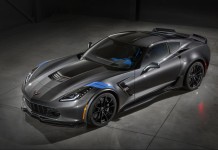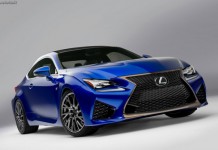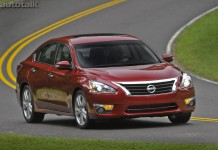If you were to put your right hand on a perfectly placed shift knob, select first gear and free-rev the throttle to hear the song of a throaty dual cam four cylinder, you might think you were in a sports car. If you were to continue to rev the loud pedal enough to hear a “whoosh” from the wastegate, you would probably think you were sitting in a fast sports car. In order to confirm your suspicions, you place your left hand firmly around the quality leather steering wheel and bring the revs to the perfect launch range. A quick release of the well-weighted clutch pedal followed by a meeting between the throttle and the firewall is all that is needed to turn your hypothesis into a truth as the howling coupe drops your stomach with pure, organic thrust. As you shift into second gear, chirp the rear tires and watch the boost gauge quickly build back up to 15 psi, you may find yourself thinking, “what am I driving!?!” A decade ago, one of the last answers to that question would have been a Hyundai. For the present and 2013 model year, change your thinking as the Genesis Coupe is indeed, a fast sports car.
The time has come for Hyundai’s first rear drive sports coupe to evolve. That evolution has come about by not a generation change, but a thorough refresh. For the 2013 model year, the same 111 inch wheelbase, front engine, 2+2 layout that was found back in 2009 is still present. The car still offers two engines that can be paired up with two transmissions and all motivation still spins the rear wheels. Considering the Genesis Coupe has continued to increase its sales year after year, it probably was a smart move on Hyundai’s part to not mess with success. Even still, there were always a few gripes with the first run cars and the refresh was implemented to deal with some of the big ones. More power is usually always a good thing, especially in the sports car segment, so the engineers at Hyundai gave the 2013 car more oomph in both four and six cylinder form. To counteract any complaints that more power breeds less efficiency, the new car sports better fuel economy via more effective engine and transmission technology. A revised dash layout should put any low-budget complaints to rest while a new face has been added; even though no one was really calling the car ugly before. If looking at the 2013 Genesis Coupe at a glance, one would think that it has simply gotten better with time. Assumptions are usually just that, so in order to find out just how revised the new car is, we traveled to New Orleans to sample the Coupe for ourselves on the twisting roads and endless highways of the southern coast.
More often than not, when manufactures put a car through a refresh, they give it 5 more horsepower, a stripe and a new interior color and call it done. Hyundai wanted to go much further than that and they did so by first addressing the car’s outward appearance. The 2009-2012 Coupe was always attractive, but in a modern and sporting way that sometimes lacked the muscular aggression of other two-door rivals. Injecting the front fascia with a shot of boldness has created a much wider grille which borrows style cues from the Veloster hatchback. The bumper cover seems much lower than before and in profile view, the 2013 car looks to have a more squared-off nose, giving it the presence of an over-the-sea muscle car. If fitted with the big six cylinder engine, the new fog light housings get filled with LED daytime running lights and all Genesis Coupes feature a new and much more aggressive cut hood. Fortunately, the same teardrop rear roof foud on last year’s car still blends perfectly with the same wide, rear fenders to drap over similar but new rear tail lamps that now house LEDs. Filling in those big fenders are new 18 inch standard wheels with 19 inch multi-spokes as an option. In all honesty, the Hyundai is by no means unique in its looks as it models such rivals as the Nissan 370Z, Mazda RX-8 and Infiniti G37. This isn’t really a bad thing as afterall, not too many people are calling any of those sports cars ugly and Genesis Coupe has enough exclusive features that if set side-by-side, it can separate itself from the pack.



Not to be outdone by the outside, Hyundai put plenty of new tricks into the interior of the Genesis Coupe. The idea behind the rework was to give it a premium sport feel that has been enhanced rather than changed. A new center stack design features better materials and a better managed layout. Piano black finish has been added to the buttons while the premium stitching surrounding the cockpit is actual stitching. The shift knob has been altered and features a more modern, straight design instead of the older car’s round button. Of all of the enhancements, the new multi-gauge analog cluster placed smack-dab in the center is easily the coolest. The left most reads instantaneous fuel economy while the right most displays oil temperature. In the V6 car, the center gauge reads off torque while in the 2.0 version, the turbo’s boost pressure is shown. Usually reserved for the aftermarket, the tri-pod dials look absolutely fantastic, especially compared to the previous car’s rather boring layout. Each piece of the Coupe’s interior feels actually made, even down to the somewhat loose-fitting shift knob. It’s obvious that this car received a lot of engineering attention and more importantly, love.



The Genesis Coupe looks like a fast sports car on the outside and on the inside, but looks have a funny way of being deceiving. Hyundai didn’t just add a new intake and call it quits but instead, they made both versions actually fast by adding serious high-end technologies. Just to make sure that the Nissan 370z won’t bully the Korean hot-rod, the top-tier 3.8 liter V6 sees both a boost in power and economy. Just like the mill found in the base 2012 Genesis Sedan, the coupe’s Lambda benefits from Gasoline Direct Injection but pumps out an even more stout 348 horsepower and 295 lb-ft of torque on premium fuel. It can still run on regular grade, but output figures drop to 344 horsepower and 292 lb-ft of torque. Letting the DOHC big six breath better is a 2-step variable induction intake, a larger exhaust system and variable valve timing while a timing chain ensures that it does so for years to come. In an attempt to stay out of the Lambda’s shadow, the base 2.0 has been given a new lease on life. Before, the turbocharged straight four put out a slightly disappointing 210 horsepower but for 2013, power figures have jumped up to 274 horsepower and 275 lb-ft of torque on premium fuel. The Theta is still 2.0 liters in displacement and is still very similar to the 2011 we tested last year but it has returned with a vengeance and direct injection. Aiding the higher pressure fuel system is a twin scroll turbocharger shoving a maximum 15 psi of pressure into the intake. Variable valve timing remains while the intercooler is 53 percent larger in capacity. To save weight, the exhaust manifold is integrated into the turbine housing which also transfers heat more efficiently. Both engines can be matched to either the six speed manual or eight speed automatic transmission. Borrowed from the Genesis Sedan and Equus, the in-house built slushbox has been specifically tuned for the Coupe’s performance with a manual shift mode and steering wheel mounted pedals for lightning quick shifts. The eight speed bumps fuel economy for both engines and in 2.0 form, the automatic can average 31 mpg on the highway. For the do-it-yourselfer, the six speed manual has been given a few trick changes to improve its operations such as a less effort-filled shifter, a bolt type drive shaft connector to reduce shift shock and a lighter clutch pedal. Everything adds up to strong and capable drivetrain that could be made even better by the aftermarket. To make a long story short, the Genesis coupe in both forms is faster than ever before.
Taking the media spot light is usually always the top trim level for a sports car such as the GT Mustang and SS Camaro. But as amazing as the 3.8 Genesis is, we spent the majority of our time bonding with a 2.0 R-Spec. Just as before, there are a little more than just one Genesis Coupe to pick from; each with their special traits and talents. For gobbling up miles on the highway, the eight speed 3.8 Grand Touring is the way to go. For cheap sideways fun, the base 2.0T six speed might be the ticket. For all out Z-Car embarrassing, the ultimate 3.8 Track manual should do the trick. But for becoming one with a machine and bonding with something that will actually listen, the 2.0T R-Spec is just right. When we drove the 2011 R-Spec with the four-cylinder, we left with thoughts of “what if there was more?” For the 2013 model year, that more has been brought by keeping the same things that made the R-Spec special, and simply making them faster. Not included on the track-rat’s list are automatic headlights, cruise control and chrome interior accents and in their place, nothing more that pure apex carving hardware. The fully independent suspension uses struts up front and a multi-link set up in the rear while the dampers and springs have been tuned for track use. Summer tires are wrapped around the larger 19 inch wheels and house big, Brembo-supllied brakes. In the back, a Torsen limited slip differential is present to keep things controlled while sideways. Another R-Spec exclusive are adjuster bolts for the front camber so that drivers can dial in there set up right from the factory. Red accents for the interior and special badging round off the package and it can roll off the showroom floor with one transmission and one price: three pedals and $26,500.
For just around a grand more than the 2011-2012 car, the 2013 can be had and you really do get so much more. Laying into the throttle should be justification enough as the new 2.0 is an absolute delight. Torque is present early on and allows for the small displacement engine to build boost rather quickly. At around 2,800 rpms, things start to squat while the exhaust note burbles and howls alongside the needle’s climb to redline. With the windows down, the turbine’s spin can be heard which makes each shift that much more enjoyable. Banging off rocket fast gear changes could be easier though, but the light action lever is appreciated at lower speeds. Even still, rolling out the throttle is so intoxicating that watching the fuel economy meter fall as the boost gauge increases doesn’t seem to hurt as much. Unlike the previous 2.0, turbo lag isn’t as present in the 2013 car and unless you truly lug the engine in a high gear, it should never show its face. There is always enough grunt to get around town and even at low rpms, the engine and transmission don’t buck or judder. If left out of boost and driven like a normal car, the R-Spec acts like a normal car: cool, composed and confident. It doesn’t feel like it could break and it’s not so raw that a driver would dread a simply trip to the corner store. Instead, they would take the long way and merge into traffic using the throttle as a steering wheel. Getting on it in second gear will kick the tail out, but the Torsen diff and well tuned suspension make sure to tell the driver just what’s going on. The story is the same when the roles are reversed. When you ask the Genesis to do something, it will listen and respond with a wagging tail and silly grin on its face. Simply put, the 3.8 might need to step its game up even more so now that the 2.0 R-Spec is this good.
When fully released, the 2013 Genesis Coupe will consist of eight different trim levels with eight different prices, ranging from $24,250 for the base, to $34,250 for the 3.8 Track eight speed. This is one of the reasons why Hyundai has been so successful with the car as there is a version available for any type of buyer. In the past, the upper cars were always a bit more sot after as the first run 3.8 models were noticeably faster and much more well-rounded than their four cylinder brethren. There were always some grumblings, especially from enthusiasts, that Hyundai was purposefully holding back the 2.0T in order bump up six cylinder sales and thus, the first run turbo cars were never as satisfying as they “could be.” Whether or not the company actually did just that, we may never know; but now that the 2013 model year is upon us, the old car’s shortcomings are quickly being forgotten. No longer a slouch, the 2.0T is a serious contender in one of the most competitive segments the automotive industry has ever given birth to. When a pretty sports car turns out to be actually quick, well made, comfortable in all situations and backed up by its parents (it gets Hyundai’s 10 year/100,000 mile warranty), a recipe for success has been written out and put in the book of performance bargains. As impressive as the new enhancements to the turbo are on paper, they’re more so in the real world as the R-Spec does the most important thing a sports car can do: put a smile on the driver’s face. Hyundai’s do better, fight harder spirit that has put them in the industry spotlight is coated in their products and thus, they drive in an utterly happy manner. A driver can quickly find the right position, grab ahold of the communicative, non-electric steering, rev the built engine, release the easy-to-manage clutch and listen to the turbo as it shoves joy into their soul. On paper, it may still be slower than its now-even-faster 3.8 sibling but off paper, the 2.0T R-Spec is perfectly capable of exceeding that version in its ability to speak to a driver. Hyundai has given proof that they indeed know what they are doing as the 2013 Genesis Coupe’s refresh did nothing but improve upon an already impressive sports car.






















